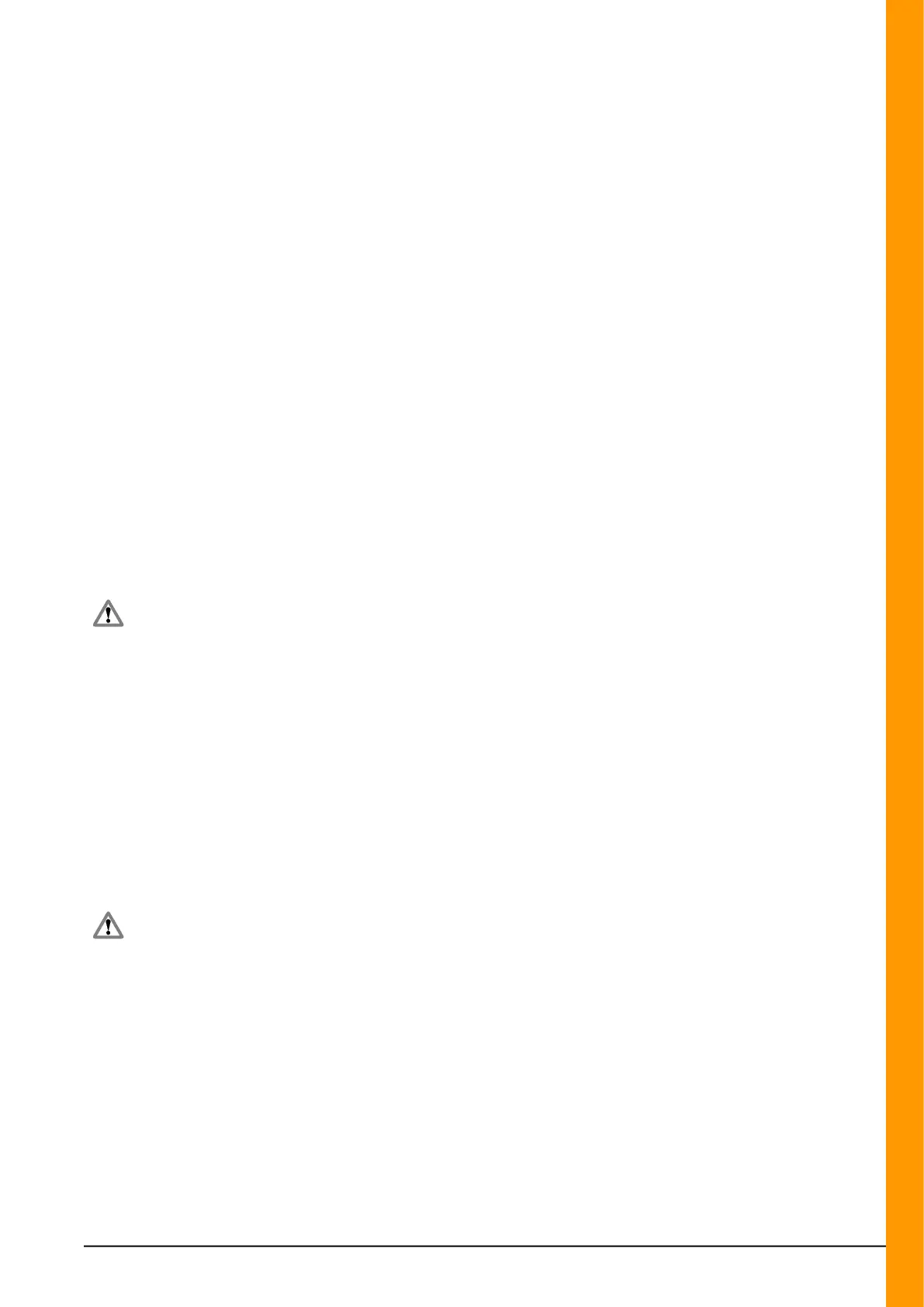5.10 Corrosion Prevention
5.10.1 General
Avoid drilling into closed frame body members
to avoid the risk of corrosion from swarf.
If drilling is required, however:
•
Re-paint metal edges and protect against
corrosion after cutting or drilling operations.
•
Endeavor to remove all swarf from inside the
side member and treat to prevent corrosion.
•
Apply corrosion protection inside and outside
of the chassis frame.
5.10.2 Repairing Damaged Paint
After cutting or reworking any sheet metal on
the vehicle the damaged paint must be repaired.
Ensure all materials are compatible with the
relevant Ford specifications and maintain the
original performance where possible. Consult
the Vehicle Converter Advisory Service
VCAS@ford.com for specifications.
5.10.3 Under Body Protection and
Material
WARNING: Do not over-coat or
contaminate surfaces of
components such as brakes or
catalytic converters.
Ensure all materials are compatible with the
relevant Ford specifications and maintain the
original performance where possible.
Some proprietary products affect the original
coatings. For specifications of corrosion
protection materials, please consult your local
National Sales Company representative or the
Vehicle Converter Advisory Service
VCAS@ford.com.
5.10.4 Painting Road Wheels
WARNING: Do not paint wheel clamp
surfaces in contact with other
wheels, brake drum or disc, hub and
holes or surface under wheel nuts.
Any further treatment in these areas
may affect the wheel clamp
performance and the vehicle safety.
Mask the wheel when changing the
color or repairing paint.
5.10.5 Contact Corrosion
When using different materials with a different
electrochemical potential, ensure that materials
are isolated from each other to prevent contact
corrosion caused by a potential difference.
Use appropriate isolation materials.
Where possible, choose materials with low level
of electrochemical potential difference.
FordTransit 2006.5 (April 2006–)
Date of Publication: 12/2006
5 Body and Paint
221

